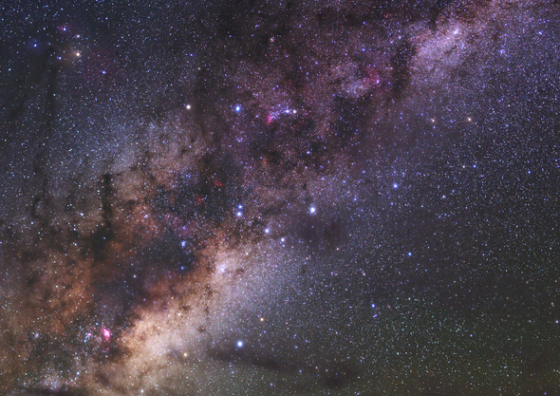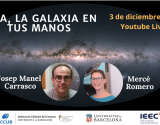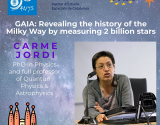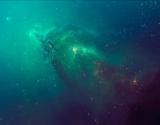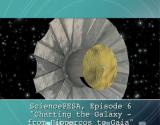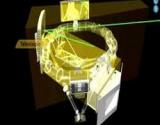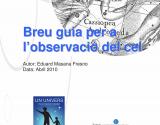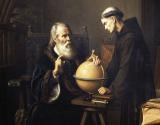Astronomers from Gaia's group Mercè Romero and Eduard Masana will give, next Thursday, October 8, an online conference on the Milky Way and the Gaia mission. The conference is framed within the context of the World Space Week 2020, and is organized by the Sant Cugat Valldoreix Astronomical Association (AASV).
About the authors
Mercè Romero obtained her PhD in Aerospace Science and Technology at the UPC, and she is a professor at the University of Barcelona and a researcher at the Gaia group of the Institute of Cosmos Sciences. He is currently part of the internal validation group of Gaia data in preparation of the final catalogue. Her research is focused on the study of the structure and kinematics of our Galaxy, specifically in determining the shape of the disk and the characteristics of the Galactic bar.
Eduard Masana is an astronomer and researcher of the Gaia group at the Institute of Cosmos Sciences of the University of Barcelona and a member of the Institute of Space Studies of Catalonia. In recent years, he has developed the Gaia GASS simulator and his research is focused on determining stellar physical parameters from photometric data. Masana also participates in several outreach activities, giving talks to the general públic and organizing astronomical observations. He is the creator of the Eclipse 2.0 application for calculating eclipses and planetary transits. His outreach activity places a particular emphasis on Gaia, with the aim of making the mission known to the general public, students or astronomy fans. He is also a member of the editorial board of the Gaiaverse outreach portal.
